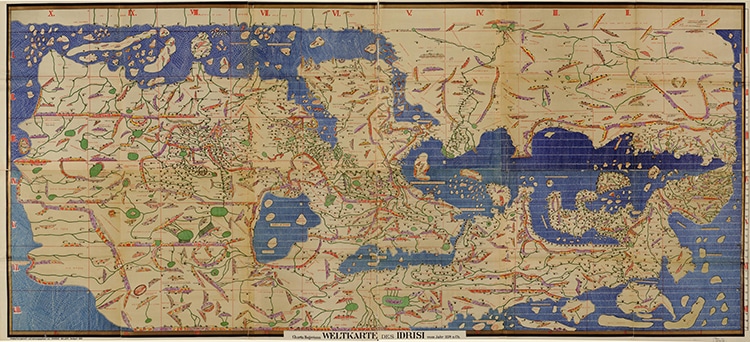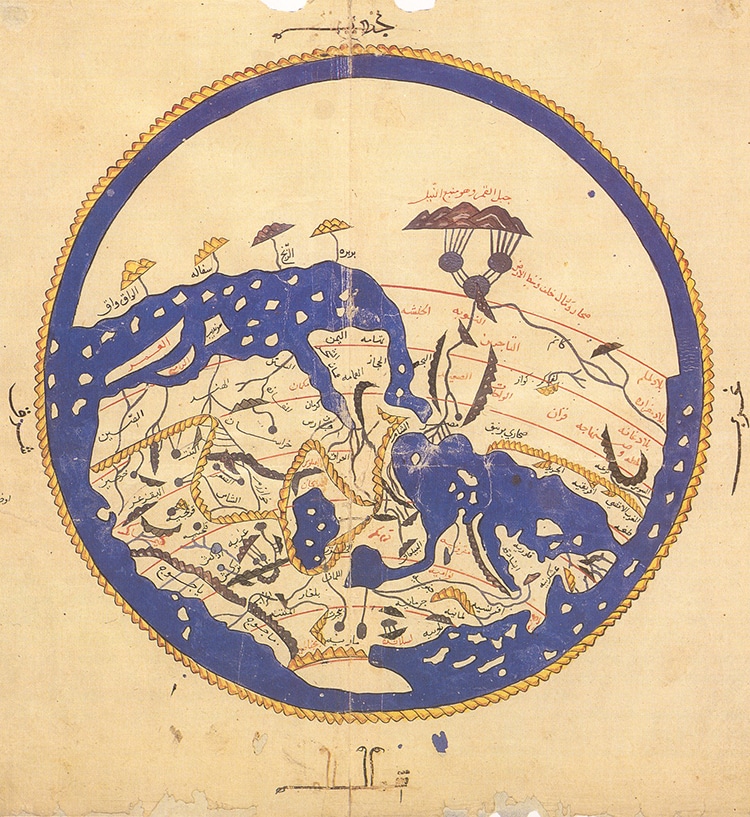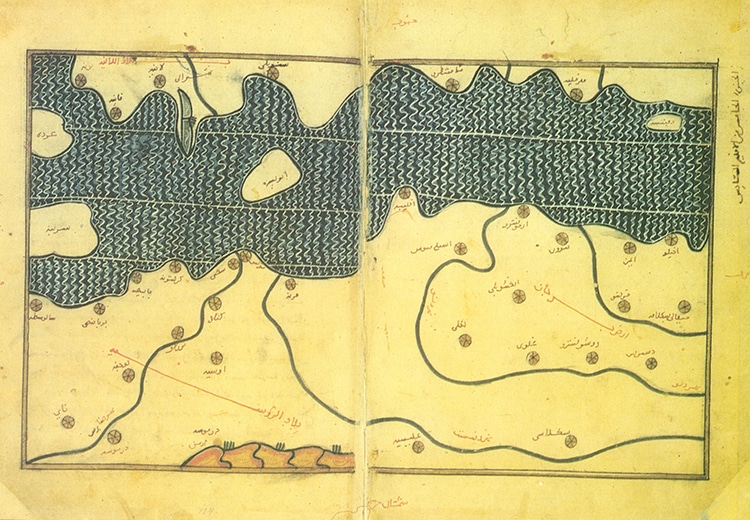A 1920s facsimile of the world map from the Library of Congress collections.
(Photo:Library of Congress, Geography and Map Division.)
Cartographersor map makersshape how we perceive our world.

A 1920s facsimile of the world map from the Library of Congress collections. (Photo:Library of Congress, Geography and Map Division.)
Most people are not fortunate enough to travel every continent and observe every sea.
He was educated at Cordoba, a city in Andalusia, in mainland Spain.
There, al-Idrisi worked alongside other scholars and the king to compile a map of the world.

A circular map found in later editions of al-Idrisi’s work, this from ‘Alî ibn Hasan al-Hûfî al-Qâsimî’s 1456 copy. (Photo:Wikimedia Commons, Public Domain)
After 15 years of work, the final project was completeda map engraved on a six-feet wide silver disk.
Al-Idrisi’s map, also known asTabula Rogerianain Latin, shows the world flipped compared to our modern editions.
In this case, south points up which is similar toother Islamic mapsof the period.

The Balkans as depicted by al-Idrisi. (Photo:Wikimedia Commons, Public Domain)
Today, the historic piece survives as ten manuscripts scattered in collections around the world.
These maps are partial, depicting the Balkans or Sicily for example.
While the geographic formations are not entirely accuratelike most ancient mapsal-Idrisi’s work remained authoritative throughout the medieval period.
The Balkans as depicted by al-Idrisi.